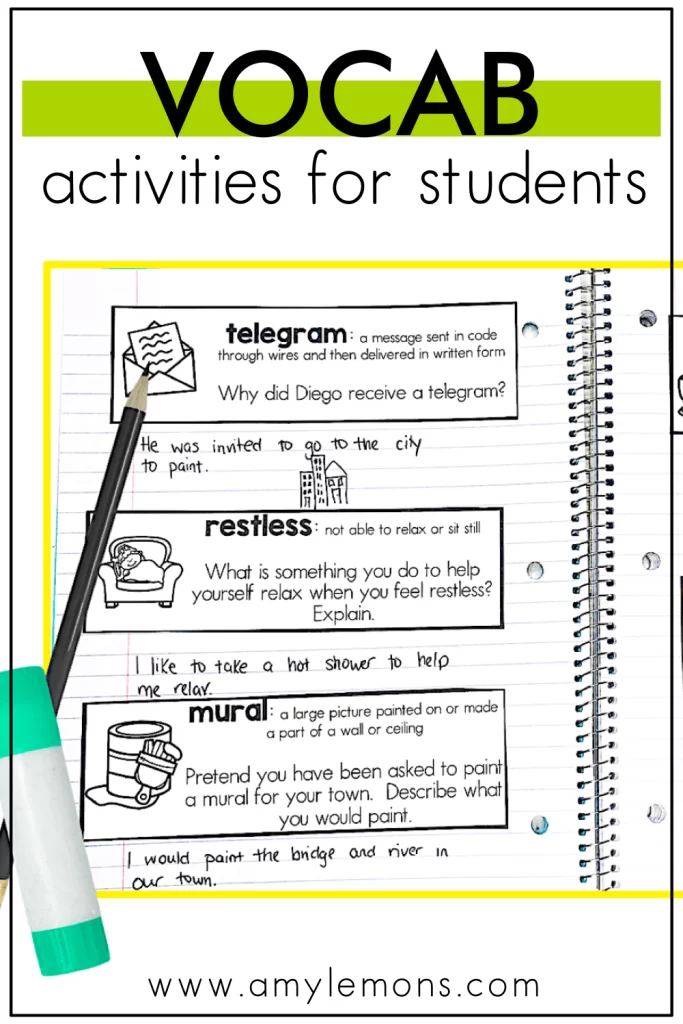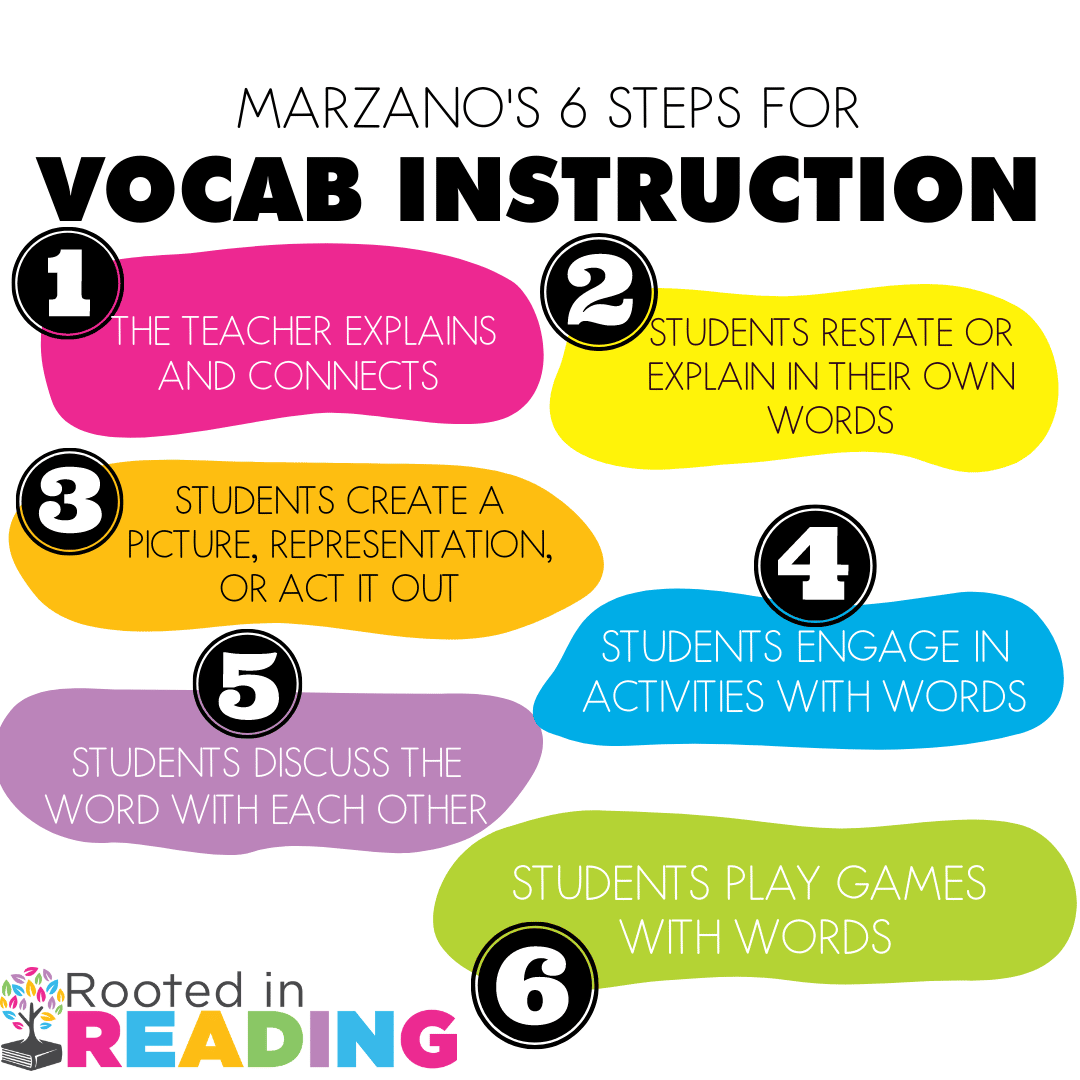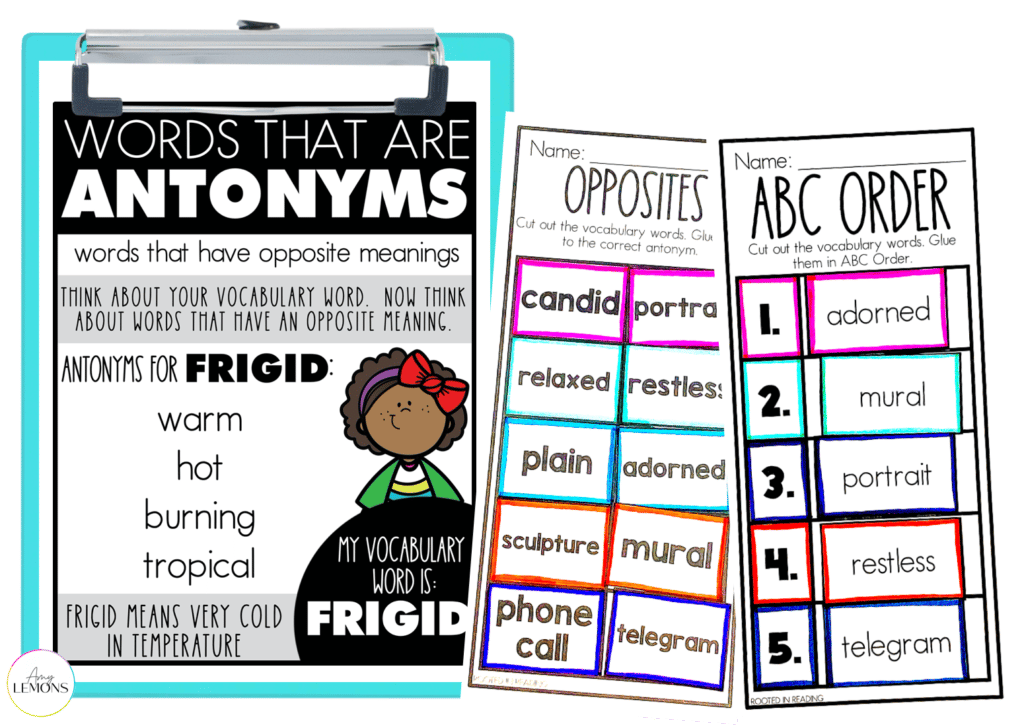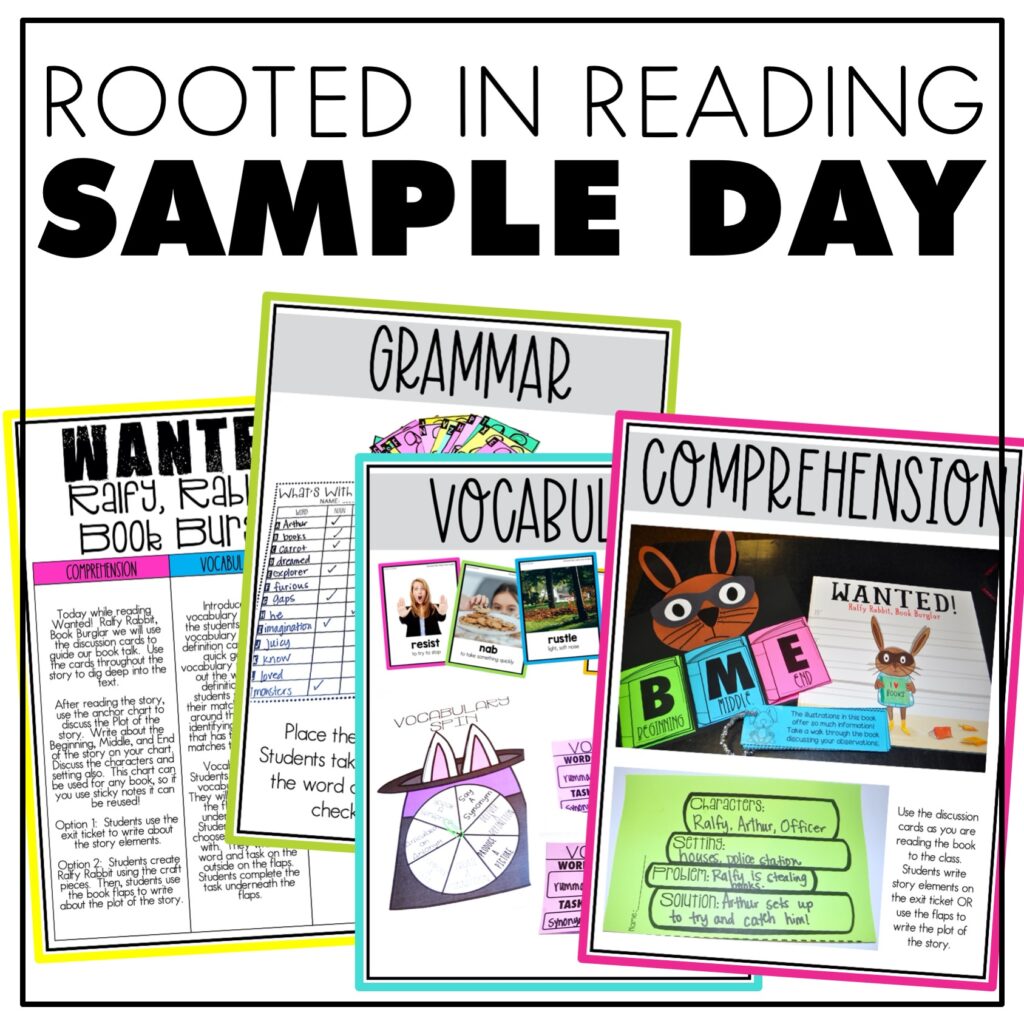

We take our vocabulary instruction seriously over at Rooted in Reading! And not just because we’re creating full ELA curriculums. We know that to be effective at improving the language habits, reading levels, and comprehension of our students, having an effective vocabulary strategy is one of THE most important components.
Today, I want to talk specifically about the importance of vocabulary in the classroom. We will have a look into the strategy we use for our resources AND I’ll be sharing vocabulary activities that we use to put it into action inside the classroom.
Speaking of vocabulary activities, you’ll snag a FREE sample week of our newest 2nd Edition Rooted in Reading resource for 2nd Grade! {You can click HERE if you want to know more about our Rooted in Reading curriculum.}

When it comes to the vocabulary activities and plans in our reading curriculum, we follow Marzano’s 6 steps for Vocabulary Instruction. One of the main reasons we focus heavily on using a read-aloud for our Rooted in Reading units is to model the behavior in step #1. Students need to hear words spoken over and over again and within context to effectively learn new meanings. As they get older, this strategy becomes even more apparent. But in the classroom, we often move away from that strategy as students begin to progress. We think, based on our research, that students should be continuously exposed to this “read-aloud” way.
In our research, we found this information from Isabel Beck, Professor of Education at the University of Pittsburgh,
“The source of later vocabulary learning shifts [as students get older] to written texts–what children read [as opposed to what they hear]. The problem is that it is not so easy to learn [vocabulary] from written context. Written context lacks many of the features of oral language that support learning new word meanings…”
With that in mind, we made it a point to focus on classroom discussions around the text we read, including vocabulary, making it a collaborative experience. This allows for students to explain vocabulary in their own words (like step #2) and speak openly about the words with each other (step #5).
We’ve mentioned this before but, during a read-aloud, we are able to offer support to students with the tone of our voice, the pace of our reading, and our facial expressions. None of this is present when students are reading on their own. This is why vocabulary is processed at a better rate through the read-aloud.
But we don’t just leave it all up to the read-aloud to carry the weight. It’s important to incorporate engaging vocabulary activities to reinforce what’s been discussed, too.
When we began creating the 2nd edition of our 2nd Grade Rooted in Reading resource, the one thing we knew we had to do was revamp the vocabulary section! It is important to us that we keep abreast of the latest strategies in vocabulary instruction and model that across our resources. With that in mind, here are a few vocabulary activities that we incorporate that you should consider for your classroom.

For our newest resource, we decided that 2nd graders could benefit from picture vocabulary cards and posters, too! It is proven that using images helps influence comprehension and rightfully so since we tend to think in images. We use them as triggers or to associate things so we can remember them later. We like to think that the definition may not stick at first, but the image sure will!
As suggested in step 3 of Marzano’s 6 steps of Vocab Instruction, you can use vocabulary cards with images to guide students in picturing, representing, or acting out the words! We take that a step further with our draw and write printables in which students are tasked with creating their own images for words and providing a definition. Speaking of printables, that’s the other important part of vocabulary instruction I want to discuss.

Your vocabulary activities should always include a set of printables or worksheets that allow students to show what they know. We decided this would be a great opportunity to incorporate printables that didn’t just hone in on meanings, but also in questioning what that looks like in reality. This is step 4 of Marzano’s vocabulary instruction, allowing students to engage in activities with their words.
For example, we have students complete sentences with their vocabulary words to ensure they understand how to use them in context. To deepen comprehension, we’ve added vocabulary writing prompts to assist students with seeing how the words fit in the world around us. We ask questions about the words that go beyond meaning so students can see what they would look like in use in real life!
But we also want students to see words relative to other things.`So, we make sure to include playful activities that test the limits.

In addition to students applying what they’ve learned, they need lots of practice in recognizing and playing around with their vocabulary words. We incorporate vocabulary activities or games that show students how their vocabulary words relate to others. We apply this by recognizing antonyms, playing with opposites, and putting the words in ABC order. As step 6 suggests, this gives the students a hands-on experience with their vocabulary.
While using their bodies to manipulate the words, they are also memorizing and familiarizing themselves with them. Vetting new vocabulary against other words deepens understanding by having a trigger to look back on, similar to those of images.
But wait, there’s more….
We’ve included all of these strategies in the newest edition of our 2nd Grade Rooted in Reading resources. It was important to us to incorporate our best vocabulary activities to ensure your classroom can effectively teach new words.
I created this sample week for our 2nd Grade RiR 2nd edition resource so you can put it to the test in your classroom. We all know that we have to be intentional with each new resource we introduce to ensure they are exactly what the students need.
Just use the form below to have this full week of Vocabulary instruction delivered straight to your inbox! We use the book, Me, Frida by Amy Novesky, for this sample but you can still use it without the book! If you don’t have access to the book, you can probably find a helpful read-aloud video online. Check out THIS one!


Hey, y’all! My name is Amy Lemons and I am passionate about providing students with both engaging and effective standards-based Math and ELA lessons.

Sample a day of Rooted in Reading with these lesson plans and activities for Reading Comprehension, Vocabulary, and Grammar!


